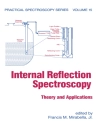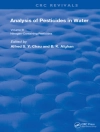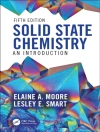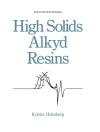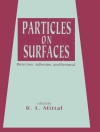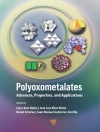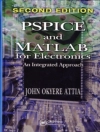Textile-Based Energy Harvesting and Storage Devices for Wearable Electronics
Discover state-of-the-art developments in textile-based wearable and stretchable electronics from leaders in the field
In Textile-Based Energy Harvesting and Storage Devices for Wearable Electronics, renowned researchers Professor Xing Fan and his co-authors deliver an insightful and rigorous exploration of textile-based energy harvesting and storage systems. The book covers the principles of smart fibers and fabrics, as well as their fabrication methods. It introduces, in detail, several fiber- and fabric-based energy harvesting and storage devices, including photovoltaics, piezoelectrics, triboelectrics, supercapacitors, batteries, and sensing and self-powered electric fabrics.
The authors also discuss expanded functions of smart fabrics, like stretchability, hydrophobicity, air permeability and color-changeability. The book includes sections on emerging electronic fibers and textiles, including stress-sensing, strain-sensing, and chemical-sensing textiles, as well as emerging self-powered electronic textiles. Textile-Based Energy Harvesting and Storage Devices for Wearable Electronics concludes with an in-depth treatment of upcoming challenges, opportunities, and commercialization requirements for electronic textiles, providing valuable insight into a highly lucrative new commercial sector.
The book also offers:
- A thorough introduction to the evolution from classical functional fibers to intelligent fibers and textiles
- An exploration of typical film deposition technologies, like dry-process film deposition and wet-process technologies for roll-to-roll device fabrication
- Practical discussions of the fabrication process of intelligent fibers and textiles, including the synthesis of classical functional fibers and nano/micro assembly on fiber materials
- In-depth examinations of energy harvesting and energy storage fibers, including photovoltaic, piezoelectric, and supercapacitor fibers
Perfect for materials scientists, engineering scientists, and sensor developers, Textile-Based Energy Harvesting and Storage Devices for Wearable Electronics is also an indispensable resource for electrical engineers and professionals in the sensor industry seeking a one-stop reference for fiber- and fabric-based energy harvesting and storage systems for wearable and stretchable power sources.
Daftar Isi
Preface xi
1 On the Basis of Fibers and Textiles 1
1.1 On the Basis of Fibers 2
1.1.1 Nature Fibers 2
1.1.2 Chemical Fibers 4
1.1.3 Classical Functional Fibers 7
1.2 On the Basis of Textiles 11
1.2.1 Traditional Textiles 12
1.2.2 Classical Functional Textiles 15
1.3 The Evolution from Classical Functional Fibers to Intelligent Fibers and Textiles 20
1.3.1 Shape Memory Fibers and Textiles 20
1.3.2 Intelligent Temperature-Regulating Fibers and Textiles 22
1.3.3 Intelligent Color-Changing Fibers and Textiles 24
1.3.4 Wearable Electronic Intelligent Fibers and Textiles 27
1.4 Conclusions 30
References 31
2 A Brief Introduction to Typical Film Deposition Technologies 33
2.1 Dry-Process Film Deposition Technologies 34
2.1.1 Physical Vapor Deposition for Film Deposition 34
2.1.2 Chemical Vapor Deposition for Film Deposition 37
2.1.3 Morphology and Pattern Design 41
2.2 Typical Wet-Process Technologies for Roll-to-Roll Device Fabrication 44
2.2.1 Chemical Reaction Coating for Thin Film Preparation 45
2.2.2 Electrochemical Reaction Method for Thin Film Preparation 49
2.2.3 Spray Pyrolysis 50
2.2.4 Langmuir–Blodgett Technique 51
2.3 Typical Film Structure Characterization Technologies 54
2.3.1 Thin Film Analysis Method: Crystal Structure Properties 54
2.3.2 Thin Film Analysis Method: Morphology Properties 58
2.3.3 Thin Film Analysis Method: Chemical Composition and Structure Properties 60
2.4 Conclusions 64
References 65
3 The Fabrication Process of Intelligent Fibers and Textiles 69
3.1 The Synthesis of Classical Functional Fibers 70
3.1.1 Wet Spinning 70
3.1.2 Electrospinning 71
3.1.3 Dry Spinning 74
3.1.4 Thermal Drawing Process 74
3.1.5 Surface Modification Method 76
3.2 The Nano/Micro-Assembly on Fiber Materials 79
3.2.1 Chemical Liquid Phase Deposition 79
3.2.2 Plasma Spraying Method 87
3.2.3 Chemical Vapor Deposition 88
3.2.4 Physical Vapor Deposition 90
3.3 Device Assembly from Fibers to Textiles 91
3.3.1 Direct Coating Based on Fabric 92
3.3.2 Layer Stacking of Fabric Electrodes 94
3.3.3 Interweaving of Fiber Electrodes 95
3.3.4 Weaving of Fiber Devices 97
3.3.5 Other Assembly Methods 97
References 100
4 Energy Harvesting Fibers 105
4.1 Photovoltaic Fibers 105
4.1.1 Fiber-Shaped Inorganic Solar Cell 106
4.1.2 Fiber-Shaped Organic Polymer Solar Cell 108
4.1.3 Fiber-Shaped Dye-Sensitized Solar Cell 113
4.1.4 Fiber-Shaped Perovskite Solar Cell 119
4.2 Piezoelectric Fibers 124
4.2.1 Working Principle of Piezoelectricity 124
4.2.2 Piezoelectric Materials 125
4.2.3 Fiber-Shaped Piezoelectric Devices Based on Piezoceramics 126
4.2.4 Fiber-Shaped Piezoelectric Devices Based on Piezopolymers 127
4.2.5 Fiber-Shaped Piezoelectric Devices Based on Piezocomposites 130
4.3 Triboelectric Fibers 132
4.3.1 Working Principle of Triboelectric Nanogenerator 132
4.3.2 Triboelectrification Materials 134
4.3.3 Triboelectric Fiber Devices 135
4.4 Thermoelectric Fibers 140
4.4.1 Introduction of Thermoelectric Effect 140
4.4.2 TE Materials for Wearable Thermoelectric Devices 141
4.4.3 Fiber-Shaped Thermoelectric Devices 145
4.5 Conclusions and Outlook 147
References 148
5 Energy Storage Fibers 157
5.1 Supercapacitor Fibers 157
5.1.1 Supercapacitor Fibers with Carbon-Based Capacitive Materials 159
5.1.2 Supercapacitor Fibers with Composited Capacitive Materials 166
5.2 Battery Fibers 169
5.2.1 Primary Battery Fibers 170
5.2.2 Lithium-Ion Battery Fibers 173
5.2.3 Lithium-Sulfur Battery Fibers 174
5.2.4 Metal-Air Battery Fibers 177
5.2.5 Other Battery Fibers 180
5.3 Phase-Transit Fibers 182
5.3.1 Phase-Transit Fibers Based on Hydrocarbons and Fatty Acids 184
5.3.2 Phase-Transit Fibers Based on Fatty Alcohols 187
5.3.3 Phase-Transit Fibers Based on Other Kinds of Phase-Transit Materials 190
5.4 Conclusions 192
References 193
6 Smart Energy Textiles 197
6.1 Energy Harvesting Textiles 198
6.1.1 Photovoltaic Energy Harvesting Textiles 198
6.1.2 Thermoelectric Energy Harvesting Textiles 203
6.1.3 Mechanical Energy Harvesting Textiles 205
6.2 Energy Storage Textiles 209
6.2.1 Supercapacitor Textiles 209
6.2.2 Primary Battery Textiles 212
6.2.3 Secondary Battery Textiles 213
6.3 Hybrid Energy Textiles 218
6.3.1 Multiple Energy Harvesting Hybrid Textiles 219
6.3.2 Harvesting-Storage Hybrid Energy Textiles 222
6.4 Commercialization Power Requirements of Smart Energy Textiles 224
References 225
7 Function Expansion of Smart Energy Fibers and Textiles 231
7.1 Stretchability of Smart Energy Fibers and Textiles 231
7.1.1 Stretchable Electrode Based on Elastic Conductive Materials 232
7.1.2 Stretchable Electrode Based Electrode Structural Designs 236
7.1.3 Assembling of Fiber-Type and Textile-Type Stretchable Devices 238
7.2 Hydrophobicity of Smart Energy Fibers and Textiles 240
7.2.1 The History of Conventional Hydrophobic Fabrics 240
7.2.2 The Development of Hydrophobic Coatings 241
7.2.3 Fabricating Technologies for Hydrophobic Smart Energy Fibers and Textiles 245
7.3 Endurability of Smart Energy Fibers and Textiles 247
7.3.1 Mechanical Stability of Smart Energy Fibers and Textiles 247
7.3.2 Chemical Stability of Smart Energy Fibers and Textiles 249
7.3.3 Other Working Stability Under Complicate Environment 251
7.4 Air Permeability of Smart Energy Fibers and Textiles 253
7.4.1 The Influence of Textile Materials on Air Permeability 253
7.4.2 The Influence of Textile Structure Design on Air Permeability 255
7.5 Color-Change Ability of Smart Energy Fibers and Textiles 258
7.5.1 Color-Changeable Materials 259
7.5.2 Color-Changeable Textiles 261
7.6 Conclusions 263
References 264
8 Emerging Electronic Fibers and Textiles 273
8.1 Stress Sensing Textiles 274
8.1.1 Piezoresistive Stress Sensing Textiles 274
8.1.2 Capacitive Stress Sensing Textiles 278
8.1.3 Other Stress Sensing Textiles 284
8.2 Strain Sensing Textiles 286
8.2.1 Piezoresistive Strain Sensing Textiles 286
8.2.2 Capacitive Strain Sensing Textiles 292
8.2.3 Triboelectricity Strain Sensing Textiles 296
8.3 Chemical Sensing Textiles 298
8.3.1 Ion Sensing Textiles 298
8.3.2 Humidity Sensing Textiles 301
8.3.3 Gas Sensing Textiles 301
8.4 Other Function Coupled Textiles 304
8.5 Conclusions and Outlook 306
References 306
9 Towards Self-Powered Electronic Textiles 313
9.1 Self-Powered Electronic Devices 313
9.1.1 Independent Self-Powered Electronic Devices 314
9.1.2 Integrated Self-Powered Electronic Devices 317
9.1.3 Other Types of Self-Powered Electronic Devices 320
9.2 Flexible Self-Powered Electronic Devices 321
9.2.1 Flexible Independent Self-Powered Electronic Devices 322
9.2.2 Flexible Integrated Self-Powered Electronic Devices 324
9.2.3 Other Types of Flexible Self-Powered Electronic Devices 327
9.3 Self-Powered Electronic Fibers 327
9.3.1 Fiber-Type and Textile-Type Independent Self-Powered Electronic Devices 329
9.3.2 Textile-Type Integrated Self-Powered Electronic Devices 331
9.4 Summary 335
References 336
10 The Future of Electronic Textiles 341
10.1 Commercialization Requirements Beyond Energy Efficiency 342
10.1.1 Energy Supply 343
10.1.2 Electronic Function Expansion 344
10.1.3 Mechanical Durability 344
10.1.4 Wearability 345
10.2 Challenges for Smart Electronic Textiles 345
10.2.1 Energy Efficiency 346
10.2.2 Diversity of Functions 347
10.2.3 Wearing Comfort 347
10.2.4 Fabrication Technology 349
10.3 A Prospective Discussion on Smart Electronic Textiles 351
References 355
Index 357
Tentang Penulis
Xing Fan, Ph D, is Professor in the College of Chemistry and Chemical Engineering at Chongqing University in China. He received his Ph D from Peking University and focuses his research on nanomaterials for energy applications. He has published over 50 scientific articles and helped design 50 patents.
Nannan Zhang, Ph D, School of Chemistry and Chemical Engineering, Chongqing University, China.
Yi Wang, Chongqing City Management College, China.


